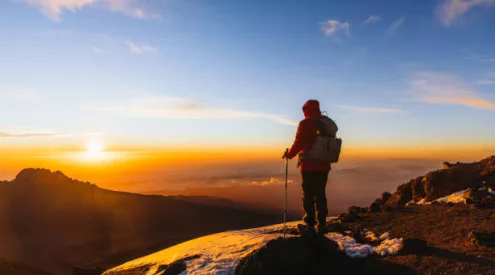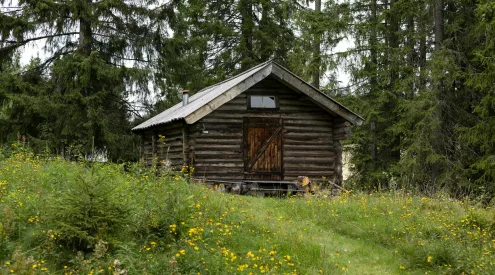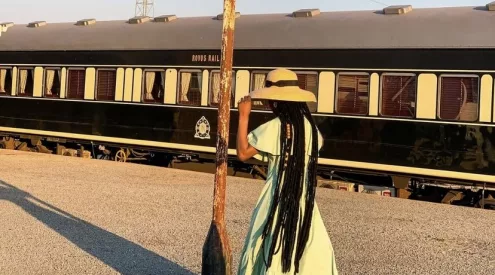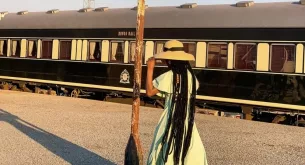The part I enjoy most about driving without a GPS or a map is that you leave yourself open to either spontaneity or confusion. You never know where you might end up or who you might meet.
One hour into our most recent trip from Knysna to Johannesburg it was time for a coffee break – this was going to be a long trip.
Impulsively, we turned off the N9 and sidled into Uniondale. A sky, empty of clouds, gaped over us as we trimmed our way through the wide and spotless streets. Nobody was about, except for a clutter of cars parked further down the main road.
I have this inexplicable affinity for old houses, tin roofs and wide, wrap-around verandahs. I unquestioningly accepted it as kismet the moment I spotted where the owners of those cars were congregating. They were sitting on a wide, wrap-around verandah of an old house with a tin roof beneath a sign that read ‘Uniondale Lodge’. Deep, comfortable fabric-covered chairs were arranged around square tables with white linen tablecloths and checkered overlays. It looked far too inviting for just a coffee; perhaps a light snack was in order after all.
Having an adventurous palate, food doesn’t easily offend me. I’ve since discovered that while I might love everything, not everything loves me. So, I was pleased to find a gluten-free savoury tart and side salad on the menu.
We spent some time after lunch milling through the guest lounge and dining area admiring the collection of antique furniture and paintings. Unusual ensembles of religious objet d’art adorned walls and pauses throughout the lodge. With a sign outside that read, ‘We buy and sell anything old and interesting’, I knew the owner of this place must have a story to tell. And so he did.
Born in South Africa and of Belgian French heritage, Fred is an established interior architect from Durban and owner of Uniondale Lodge. Evidence of his eclectic style reflects in his exhibits all through the guest lodge; although he assures me he’s a minimalist at heart.
Listening to Fred van Blerk was like dipping into a tin of Quality Street. Each cellophane wrapper contained a story, a piece of history, an event or an anecdote, revealing that Fred was not only a designer but a natural raconteur too.
From where we sat on the veranda we could see the Standard Bank building across the road. It was here that the husband of Dalene Matthee, well-known South African author, was the bank manager in the 1970s. Jozelle’s is the convenience store, opposite the bank. The name is of Hebrew origin and is a reminder of the town’s Jewish history. In Uniondale’s heyday, wagon building and ostrich feather farming was a steady occupation.
Today it is an active farming community. The town hosts The Agricultural Show in springtime each year. Another attraction in the annual calendar of events is The American Saddle Horse Show, with stabling provided for 200 horses.
Uniondale is neatly stitched into a parcel of land, conveniently threading to the bio-diverse region of the Baviaanskloof; Langkloof Valley’s apple orchards; the ‘undiscovered’ Kammanassie Nature Reserve (home to the endangered Kammanassie blue butterfly) and the scenic Prince Alfred Pass built by the famous road engineer, Thomas Bain.
But Fred was still to present us with his pièce de résistance.
When a Belgian traveller bemoaned his lack of knowledge on the area, he took up the challenge to do something about it. Fred, along with three other contributors, collaborated on a book project that will have visitors seeing Uniondale through new eyes. We felt very privileged to have a sneak preview of the book, albeit in beta phase.
Written for those who want more from a place than the usual tourist attractions, the book taps into one’s intellectual inclinations. Qualified professionals have designed an authentic experience by way of self-guided routes that expound on the area’s geological, environmental, historical and cultural offerings. An excerpt from the book reads, ‘The different routes bring to life the ecology of the area – including birding, the ancient structure of the topography, the culture, the intriguing and sometimes tragic history of the people.‘
Fred feels the town needs a lift without sacrificing its character. The book continues, ‘The objective is to engender the development of the tourist potential of this unique region. By so doing, the association will help facilitate the economic growth and job creation possibilities that are inherent and nascent, thus providing benefit to all its inhabitants through personal growth and financial upliftment.’
The book has a clean and attractive layout with relevant photographs. As part of the page design, the artwork incorporates geological shapes from the area. For easy identification, the region’s bergskilpad (leopard tortoise), is the logo on the colour-coded routes.
With the lengthening shadows approaching, it was a reminder that we were still miles from our next stop. Our intention of a quick coffee break turned into a couple of hours of discovery and charming conversation. Even though we reluctantly said goodbye to Fred, we did leave with a goodie bag of inspiration and a resolution to return to Uniondale before too long.















